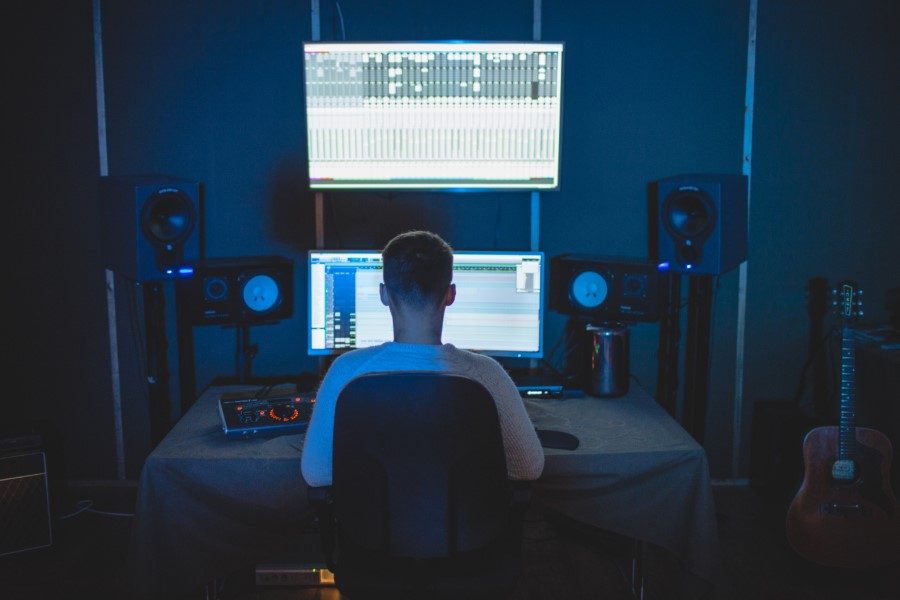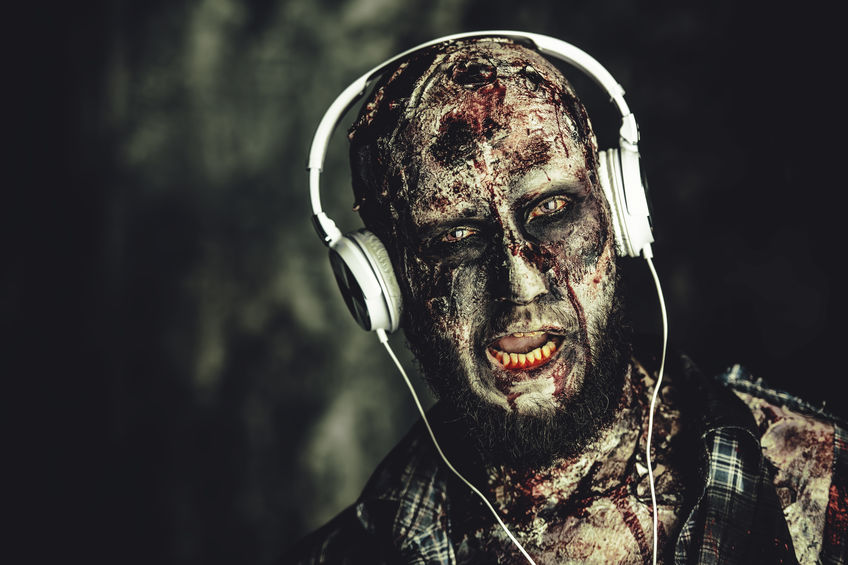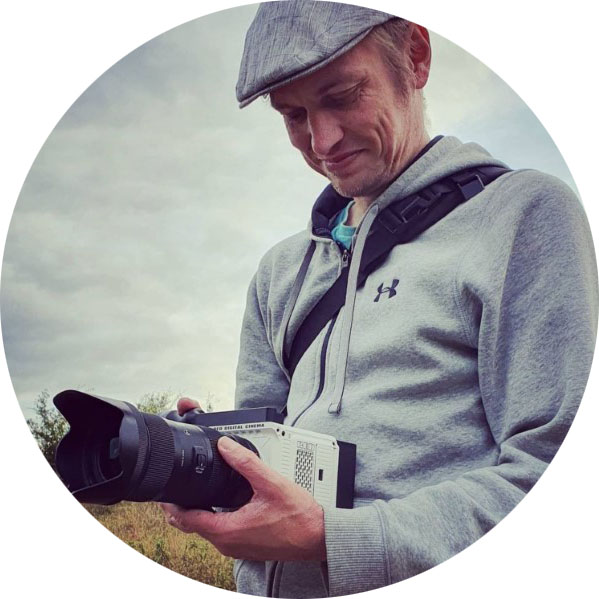Music is a fantastic way to create a mood or atmosphere in your video.
But you can’t just take your favorite track of the month and use it as background music in your next commercial, YouTube video, or vlog. If you do, the record company might sue you, and you might have to pay a hefty fine.
The solution to not getting into any trouble is to use royalty-free music that is free to use without paying ongoing fees (royalties) for each usage or distribution.
This article is a curated overview of good royalty-free music libraries (free and paid options) with a great selection.
Table of Contents
Free Royalty-Music Libraries for Videos and Film

The free music libraries feature royalty-free music that is free to use without attribution or licensed under licenses such as Creative Commons. Be aware that the free sites rarely offer indemnification.
Read more about the different stock media licenses and indemnification, and remember that these are subject to change. So, always read the fine print before you license.
Free Music Archive
Library Size: Large, with thousands of tracks across various genres.
Licensing: Mostly Creative Commons.
Pricing: Free.
Indemnification: Not included.
Why It’s Great: It’s a treasure trove of music for any project curated worldwide.
Description:
The Free Music Archive is your go-to if you’re seeking a wide variety of music without spending a dime. Remember, since it’s free, there’s no indemnification. This means you’re on your own if there’s a copyright issue. But, with careful selection and attention to licensing details, you can find gems for your projects.
Bensound
Library Size: Hundreds of tracks.
Licensing: Creative Commons and Subscription.
Pricing: Free for Creative Commons; paid subscriptions available.
Indemnification: Not included in the free version; available with subscription.
Why It’s Great: Offers a handpicked selection of music, making it easy to find quality tracks.
Description:
Bensound stands out for its curated selection of music that can enhance your projects. The free option is great for those on a tight budget, but remember, there’s no indemnification unless you opt for a subscription. This means if you’re using music for commercial projects, considering the paid option might be safer.
Incompetech
Library Size: Hundreds of compositions.
Licensing: Creative Commons.
Pricing: Free.
Indemnification: Not included.
Why It’s Great: It’s home to Kevin MacLeod’s well-known compositions, offering a variety of genres.
Description:
Incompetech is your destination for high-quality, free music. Kevin MacLeod’s compositions, available under Creative Commons, can add the perfect touch to your project. There’s no indemnification, so you must ensure the music’s licensing fits your project’s needs.
Paid Royalty-Music Libraries for Videos and Film

The paid options section includes some of the best pro music libraries for videos, short films, commercials, YouTube videos, and other content.
Adobe Stock
Library Size: Thousands of professional-quality tracks.
Licensing: Royalty-free.
Pricing: Subscription or per-track purchasing options.
Indemnification: Included, but you might need to upgrade for higher coverage.
Why It’s Great: Integrated with Adobe’s suite, making it incredibly convenient for creators using Adobe products.
Description:
Adobe Stock isn’t just for photos; its audio library is filled with high-quality tracks that are perfect for any project. It offers peace of mind, and indemnification is included. However, consider upgrading for projects requiring more extensive coverage. Some free music is available, but the best gems are in the subscription.
Artlist
Library Size: Extensive, with thousands of tracks.
Licensing: Universal licensing.
Pricing: Subscription-based.
Indemnification: Not included in the standard subscription; requires an Enterprise solution.
Why It’s Great: Offers a wide range of music and sound effects with a simple, universal license.
Description:
Artlist is a favorite among creators for its vast library and straightforward licensing. The subscription fee covers everything, including indemnification, making it a worry-free choice for commercial projects. They occasionally offer free music, but the subscription is where you’ll find the most value.
Musicbed
Library Size: Thousands of songs from talented musicians.
Licensing: Various, including single-use and subscription.
Pricing: Subscription and per-use licensing options.
Indemnification: Included, no need to upgrade.
Why It’s Great: Curates music from award-winning artists, offering unique tracks for your projects.
Description:
Musicbed stands out for its collection of music from award-winning artists worldwide. With indemnification included in all plans, you can select music confidently for your projects. While they offer some free options, the subscription gives you access to a broader and more exclusive selection.
PremiumBeat
Library Size: Thousands of high-quality tracks.
Licensing: Royalty-free.
Pricing: Subscription or per-track purchasing options.
Indemnification: Included.
Why It’s Great: Offers a curated selection of tracks with simple, clear licensing.
Description:
PremiumBeat, a Shutterstock company, provides an extensive library of curated music. The clear, simple licensing and included indemnification make it a hassle-free choice for creators. While primarily a paid service, watch for their occasional free track offerings.
Epidemic Sound
Library Size: Tens of thousands of tracks and sound effects.
Licensing: Subscription-based for unlimited access.
Pricing: Monthly or yearly subscription options.
Indemnification: Included with subscription.
Why It’s Great: Offers a massive library and the subscription includes access to sound effects, making it perfect for video creators.
Description:
Epidemic Sound has a vast selection of royalty-free music and sound effects in the subscription. The worry-free licensing and indemnification protect your projects, allowing you to focus on creativity. They offer some free tracks, but the real value lies in their subscription service.
Soundstripe
Library Size: Thousands of tracks, with new music added weekly.
Licensing: Subscription-based, with unlimited licenses.
Pricing: Monthly or yearly subscription options.
Indemnification: Included in all subscription levels.
Why It’s Great: Fresh music is continually added, ensuring you always have access to new sounds.
Description:
Soundstripe keeps your projects fresh, with new music added every week. The included indemnification across all subscription levels means you can create with peace of mind. They focus on providing high-quality music through subscriptions, but it’s worth noting they occasionally offer free songs for a trial.
AudioJungle
Library Size: Hundreds of thousands of tracks and sound effects.
Licensing: Per-track or pack purchasing options.
Pricing: Varies depending on the track, license type, and whether the track is purchased individually or as part of a pack.
Indemnification: Offers protection to buyers under certain conditions.
Why It’s Great: AudioJungle provides many high-quality music and sound effects and flexible licensing options for various project needs and budgets.
Description: AudioJungle is part of the Envato Market ecosystem, a hub for purchasing royalty-free music and sound effects. The platform offers various audio tracks from genres, including cinematic scores, corporate tunes, pop, rock, and electronic music.
AudioJungle’s user-friendly interface and search functionality make finding the perfect soundtrack or sound effects easy for any project. With its commitment to quality and diversity, AudioJungle has become a go-to resource for creators looking for affordable, legally sound audio content.
Closing Thoughts
Finding the perfect soundtrack for your project doesn’t have to be a royal pain if you know where to look, and I hope you found this guide helpful.
Sites differ in indemnification and licensing policies, so remember to read the fine print, which can save you from potential headaches.
Up Next: Tips on how to get the right music for a short film.

